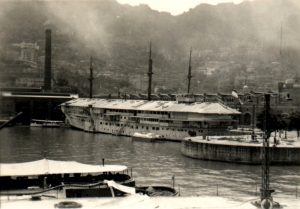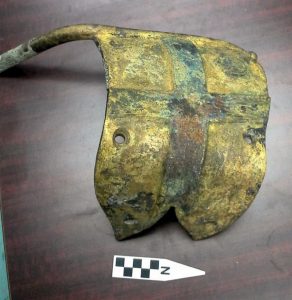Strong evidence have been found that metal wreckage found on the Wan Chai seabed in Hong Kong was the HMS Tamar, a depot ship scuttled in 1941 during the second world war.

The ship’s possible location was discovered in 2014 during harbour dredging in Wan Chai neighbourhood of Hong Kong, when a metal piece of the wreckage was found. A research on the wreckage has been completed, identifying the wreckage as the HMS Tamar – a Royal Navy troopship built in 1863 which served as a base ship of Hong Kong from 1897. On December 12, 1941 it was scuttled to avoid being used by the invading Japanese forces. The location of the metal objects matches the position of the only recorded wreck of HMS Tamar in that precise position, based on a comprehensive review of the charts.

Multiple findings were made during the study, but no direct evidence was found – like the ship’s bell, nameplate and other unique identifiers. But the presented evidence show that the wreckage is unlikely to be from other ship than the 40m long HMS Tamar. The finds match Tamar’s specifications, such as the size, riveted wrought iron construction with large timber elements bolted on, white over red lead paint finish, and possible evidence for artillery or explosives damage.

Experts found diagnostically British and military artefacts – some bearing War Department broad arrow stamps – such as a copper alloy replica of a Royal Navy Commodore’s pennant. The Hong Kong naval base was historically under the command of a commodore, whose headquarters and flagship until the Pacific War was HMS Tamar. Also a nameplate bearing the inscription “PLY 11217 E Goodman 7.13 was discovered, matching the service number to Edgar Charles Goodman, who enlisted in the Plymouth Division of the Royal Marine Light Infantry in 1901.

Other finds include a stamped brass ashtray, which has no obvious markings, but follows a standard Royal Navy pattern, a bullet, a brass Royal Marines cap badge and six brass buttons, including examples identified as being from the uniforms of members of the Royal Marines, Royal Navy and Royal Marines Light Infantry.
(after Naval Historical Society of Australia, Civil Engineering and Development Department, Hong Kong Economic Journal, South China Morning Post & Hong Kong Free Press)